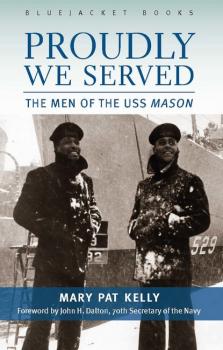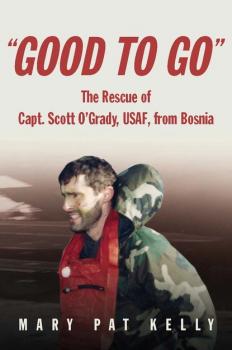ТОП просматриваемых книг сайта:
Mary Pat Kelly
Список книг автора Mary Pat KellyАннотация
Few Americans know the history-changing story of the USS Mason, a World War II warship manned by an African-American crew that served as a role model for the integration of U.S. Navy ships. At a time when most blacks in the Navy were relegated to mess duties, the crew of the USS Mason escorted six convoys across the perilous North Atlantic, from the weeks leading up the D-Day invasions until V-E day in 1945. As part of the so-called Hunter-Killer groups that defeated the German U-boats, they helped win the Battle of the Atlantic. Proudly We Served: The Men of the USS Mason tells the story of these brave men and their contributions to the Allied victory. Their success had a direct impact on President Harry S. Truman’s decision to integrate all of America’s armed forces after the war. Recommended in 1944 for a commendation for their heroic actions during a violent storm, the Mason sailors finally received that commendation in 1995, after the publication of this book in hardcover and the release of a companion documentary. The men and ship have been further honored by the Navy’s decision to name a new destroyer (DDG 87) after the Mason and propagate its proud heritage into the twenty-first century.
Аннотация
So perfectly executed was the mission to rescue Capt. Scott O'Grady that it amazed even the men responsible. Just five hours after radio contact was first made with Basher 52 – O'Grady's call sign the Air Force captain was safely on board the USS Kearsarge. The downed F-16 fighter pilot's rescue from a Bosnian mountainside by Col. Martin Berndt's 24th Marine Expeditionary Unit electrified the nation in June 1995 and renewed many Americans' faith in the military. This book tells the story of the mission in the words of the men who commanded, planned, and carried it out. To get the inside account, Mary Pat Kelly traveled throughout Europe to conduct more than one hundred interviews, visiting U.S. ships and bases and UN posts in Croatia and Bosnia where participants were stationed. Admiral Leighton W. Smith Jr., commander in chief of U.S. naval forces in Europe and head of NATO forces in the Southern European theater, provides the framework with his day-to-day commentary on the efforts to find Captain O'Grady and a nearly minute-by-minute record of the rescue itself. In concert with Lt. Gen. Michael E. Ryan, commander of U.S. and NATO air forces, the admiral reveals the decision-making process that led to the «Good to Go» order. Readers then hear from the Tactical Recovery of Aircraft and Personnel (TRAP) team-the Navy and Marine Corps commanders, pilots, crew chiefs, and grunts who made it happen. Speaking for the Navy are Capt. Christopher Cole, skipper of the Kearsarge, Commo. Jerome Schill, and their staffs, from the intelligence officers to the grapes who fueled the aircraft. Captain O'Grady puts his own experiences in the context of overall events.


